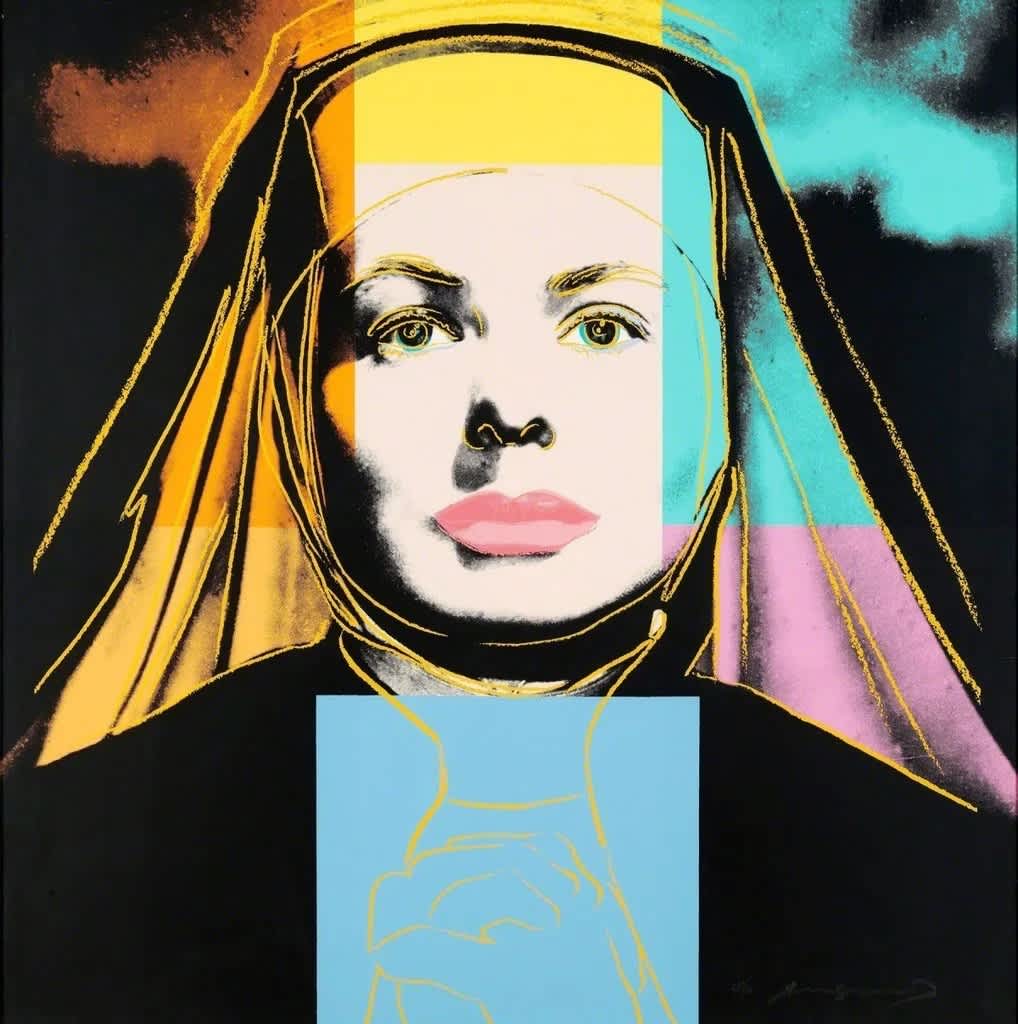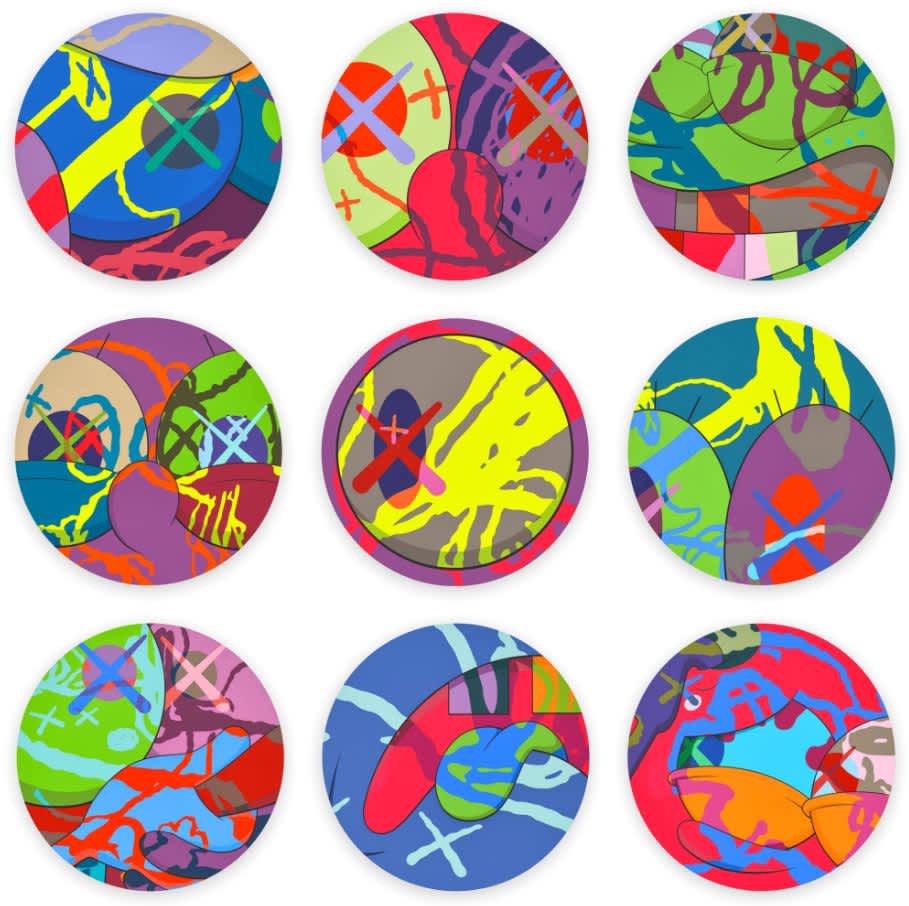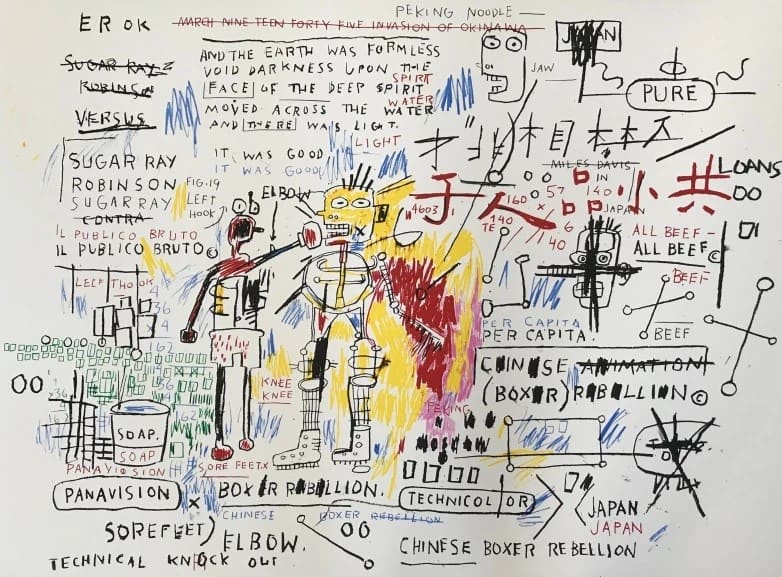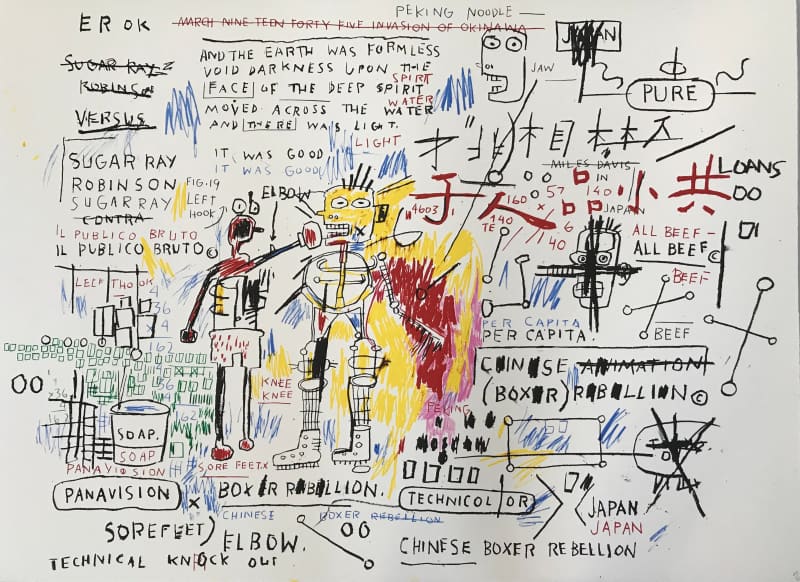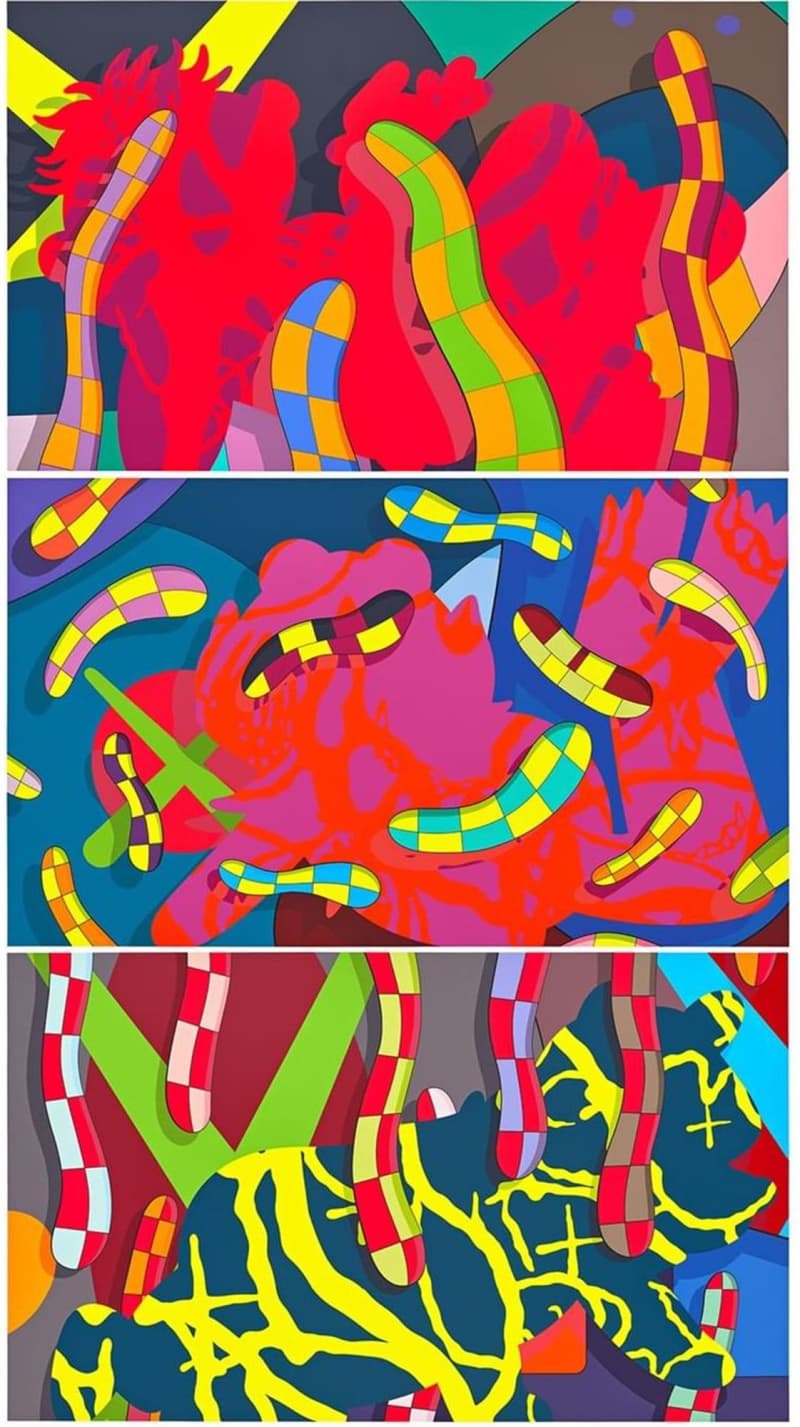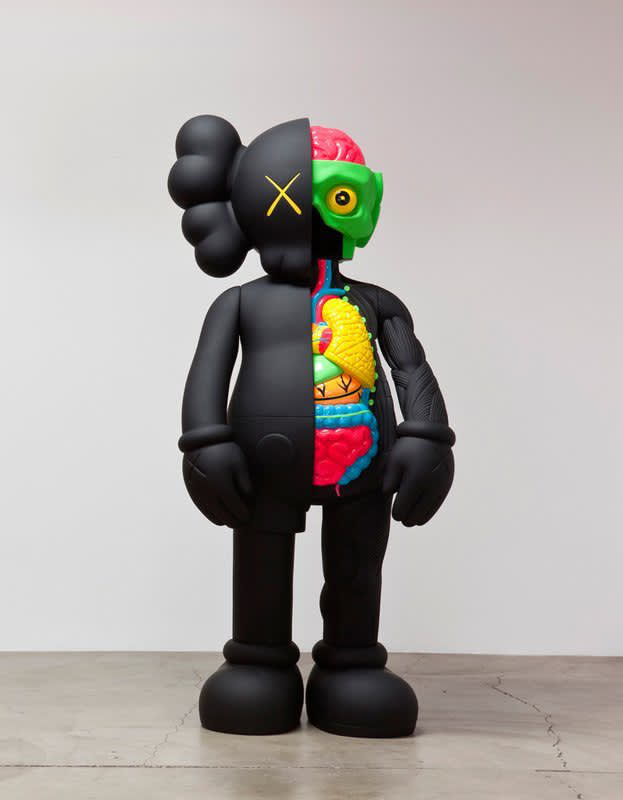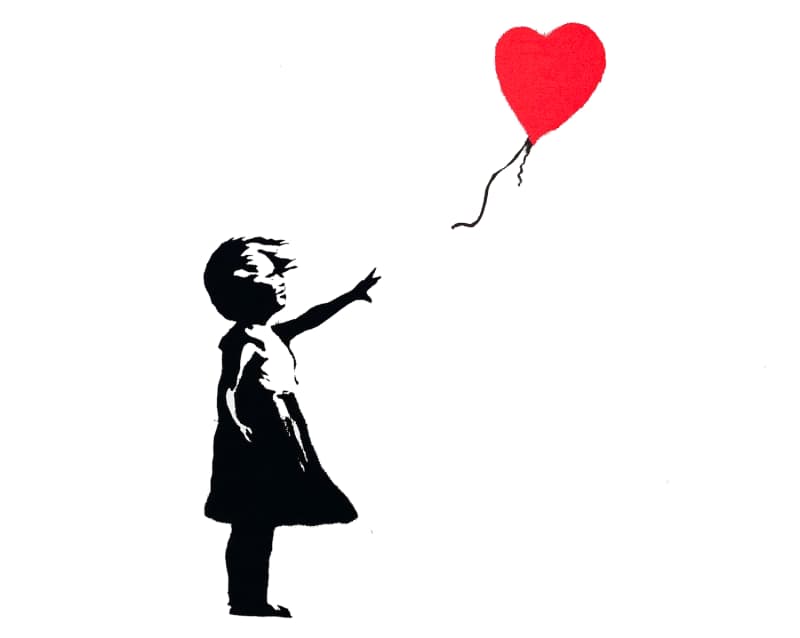The Value of Street Art
When you hear the phrase ‘street art’, what springs to mind? Subway graffiti or a £1million art sale at Sotheby’s? Spray painted tags or Louis Vuitton bags?
Best Buddies, Keith Haring, 1990
Over the last few decades urban art has moved from the periphery to the centre stage in the art world. Banksy’s million-pound sale of Girl with Balloon at Sotheby’s caused a sensation when the painting slipped through a shredder hidden in the frame. Artists who made their reputations on the streets, such as Brian Donnelly (aka KAWS) find themselves working with luxury brands in a world where public art and commerce meet.
Increasing investment opportunities
For investors in art this is an exciting time. At one end of the spectrum, artists like Jean-Michel Basquiat sell for millions. At the other, fairly modest investments in limited edition prints and objects from artists such as Banksy or Keith Haring have shown dramatic rises in value.
What are the hallmarks of art labelled street or urban art? It has its origins in public spaces or it’s easily accessible. It’s borne out of street culture – music, rebellion, poverty. It’s politically challenging or socially subversive. It’s not found in a frame. It’s not even permanent necessarily, just as likely to be painted over, knocked down or removed. And it’s not always entirely clear who owns it or whether it’s legal. Sometimes it’s not even clear that it’s art, and you’re just as likely to find street art motifs on a pair of trainers as a gallery wall.
Ingrid The Nun, Andy Warhol, 1983
For some, the godfather of street art is Andy Warhol, although he didn’t start on the streets. But his influence and patronage were crucial to the development of this movement. Warhol appropriated familiar images from consumer culture and mass media, subverting the repetitive, mass produced nature of the consumer society around him. “I don’t think art should be only for the select few,” he claimed, “I think it should be for the mass of the American people.”
Art for the people
Art for the people could be the campaign slogan for the street art movement. Only now the people would need over $100 million to buy some of Warhol’s more iconic works. And by working with brands such as BMW later in his career, Warhol paved the way for today’s street artists to work with commercial brands.
Two of the most significant street artists to come out of the 70s and 80s New York art world were Keith Haring and Jean-Michel Basquiat. Both were friends of Warhol and both have left a lasting influence on the street artists of today.

Influunt Purpura, Lefty Out There, 2019
Similarly, KAWS, Brian Donnelly, is an artist with a strong graphic style – taking iconic cartoon characters and replacing their eyes with a signature ‘X’. Like Warhol, his creations blur the lines between fine art and commercialism. As a graffiti artist he began subverting images on billboards, bus stops and phone booths. In time, these graffiti advertisements became increasingly sought after by the public, and he travelled extensively to work in Paris, London, Germany, and Japan.
Artists like Lefty Out There or KAWS also share Haring’s desire to keep art accessible to a wider audience. When Haring realised his art was priced beyond the public’s pockets, he opened PopShop. In his words, “The Pop Shop makes my work accessible. It’s about participation on a big level.”
You can buy into KAWS at a range of prices. For the mega-rich, his satire on the Beatles Sgt Pepper Album cover populated by characters from the Simpsons last sold for $14.8 million. You can buy a limited-edition vinyl collectible from as little as £300. Or simply buy a pair of Air Jordans with a KAWS design.
The Legacy of Basquiat
The other great name from the 80s New York street art scene is Jean-Michel Basquiat. Basquiat rose to fame on the back of tag SAMO – to which he even added a copyright symbol in a subversive nod to commercialism. Moving on from the enigmatic messaging that accompanied his tag, Basquiat refined his art using psychologically powerful combinations of anatomical diagrams, charged words and cryptic phrases, numerals, pictograms, commercial graphic art, allusions to African history and African-American pop culture, as well as stick figures and maps. He painted on random found objects such as discarded doors. He befriended Warhol and the two worked together. Again, political and social themes inform his work – most notably in Defacement, a painting on the death of fellow graffiti artist, Michael Stewart, who was violently arrested by the NYPD and later died in hospital of bruising and brain damage.
Basquiat himself died of a heroin overdose at 27, but his legacy is apparent in many of today’s street artists.
Boxer Rebellion, Basquiat, 2018
And what of Banksy, the biggest name in today’s street art scene? Now approaching middle age, his work still has the satirical, subversive nature of his younger period. Topics like Brexit or Extinction Rebellion feature heavily in his guerrilla artwork. And even though Banksy originals sell for up to £1 million, his art is still accessible on the street, or enjoyed in situ with events such as his parody theme park, Dismaland. Anyone who bought a Girl with Balloon print for £150 twenty years ago is now looking at an image worth over £100,000.
Just make sure it doesn’t shred itself.


